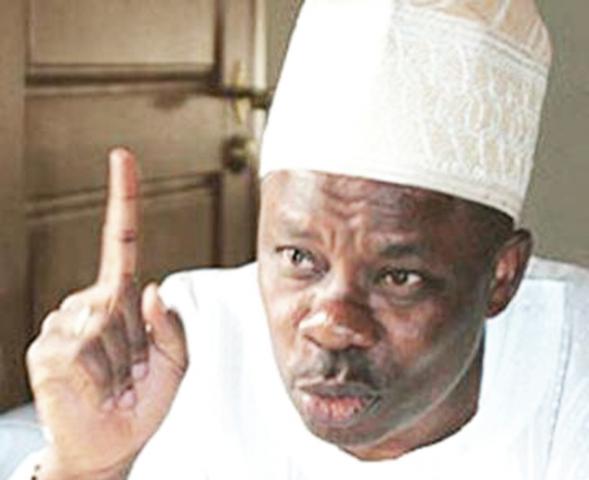ON Friday, 13th November, 2015, the Ibikunle Amosun administration in Ogun state brought the creme de la creme of government apparatus into the expansive hall of the former Gateway Hotel Abeokuta, now Park Inn. The list of attendees included commissioners, special advisers, consultants and permanent secretaries among others. It was a one-day retreat to jump-start the second term administration of Governor Amosun who was also in attendance.
The Abeokuta event offered a rare opportunity to brainstorm over such knotty issues as effecting modern transformational governance in Ogun state, embedded in infrastructural rebirth, investment drive and revenue generation while keeping an eye on people-friendly governance.
For Amosun, it is not so much about what to do to memorably impact on the affairs of his people but how to sustain the present tempo of infrastructural hurricane he wrought on the state since 2011 when he assumed office. For reasons that are obvious, the helmsman’s throbbing headache is easily decipherable. Available records show convincingly that in four years he has challenged failure to a duel by embarking on unimaginable volume of infrastructural workload. His somewhat ‘greedy’ onslaught on underdevelopment in Ogun state led many to reach the inevitable conclusion that he has, indeed, overdrawn his goodwill with the impatient god of accomplishment.
Although his scorecard – particularly on successfully executed road infrastructure in many areas of the state – shocked many of his critics, many of them are still in various stages of completion at the close of first term last May. His critics were unsparing in firing salvos his way for this reason and the fact that many residents lost property to the bulldozers. Criticism of the administration is most strident in areas where road projects await completion. Many hold the strong view therefore that the governor should have bitten less for a mouthful.
None, nevertheless, would forget in a hurry the uninspiring state of infrastructure in Ogun State prior to May 2011 when Governor Amosun took over. As a matter of fact, the administration met a comatose civil service, dysfunctional economic plan, moribund infrastructural arena aside from near-death state of health and educational facilities. The situation was so palpable that as the new helmsman took his oath of office in Abeokuta, the state capital, many banks in the state shut their gates against customers. Reason? Intractable menace of armed robbers.
Aside man-made challenges, nature-induced peculiarities instantly made the job in the hands of the new governor quite tasking. Birthed in February 1976, the state boasts an estimated population of 4.3 million people occupying a land mass of about 16,409.16 square kilometres. Much as its proximity to the megacity of Lagos attracts advantages, the circumstances also impose its spectacular challenges. This gory situation is most manifest in the area of crime. Fleeing hoodlums and social fugitives from Lagos found Ogun a homely environment. This was promptly tackled by the Amosun administration through massive procurement of Armoured Personnel Carriers (APCs) deployed across the state.
In the meantime, the state’s health sector during the Amosun era has increasingly witnessed remarkable upliftment. Hospitals have sprung up in communities without one in the past. The existing ones have also been well-equipped while health personnel are currently enjoying never-before -experienced welfare largesse from government. Efforts of the government in these areas have greatly resulted in renewed confidence of the citizenry in public health policy of the government.
The Amosun administration’s policy on urban renewal is classic. It is anchored on five cardinal points. There is no doubting the fact that every effort made in the area of modernisation geared toward making life more meaningful for the people thrives only on efficient road infrastructure. Roads are the vehicles to take anyone to other government facilities.
While most roads in Ogun State had failed by 2011, the fact that a great number of them have been constructed between 30 and 40 years ago worsened the situation.
It is, therefore, understandable that modern day pressure on the roads cannot be sustained by this old inadequate road network, a development leading to failure of these facilities. It is against this background that the Amosun administration has evolved the now famous Ogun standard roads.
These roads, as a concept, must each have six carriage lanes with median and drainage on either side. Each should also be equipped with green belt, street lights, walkways, service ducts for cable crossing and grade separations. This type of road, an imposing legacy of the Amosun administration, is the Ibara-Sokori -Totoro Road in Abeokuta. Another is Benin express junction-Oba Erinwole-Sabo-Kara road in Sagamu which traverses the whole of seven kilometres. They are found in all federal constituencies of the state. Altogether they all add up to 307 kilometres when completed. These roads also have a total of 14 overhead bridges.
Under the rural road project scheme of the Amosun administration, 20 kilometres of roads were graded in each of the 20 local government areas of the state. In this project, still on-going, a total of 400 kilometres of roads had been opened up. Deflooding and channelisation of water have also been carried out in many areas of the state.
In spite of this eye-popping record of achievements, the Amosun administration scored its most decisive goal in the area of fiscal management. It is widely known that all tiers of government have been assailed by intractable cash crunch. The administration weathered the nation’s economic storm while still performing its transformational duties to the people without exposing the state to debts either in form of loan or unpaid services of contractors.
•Lawal is Publicity Secretary, All Progressives Congress, Ogun State.

